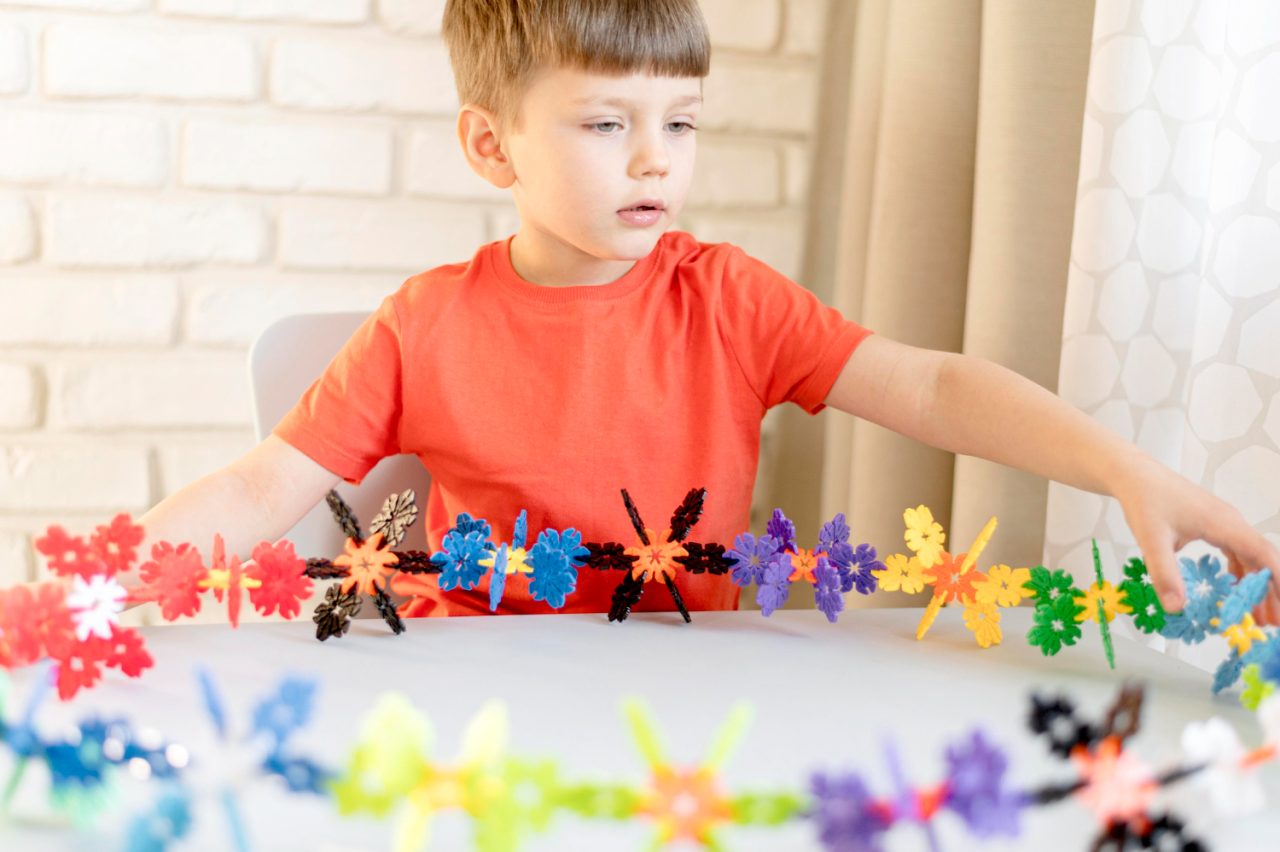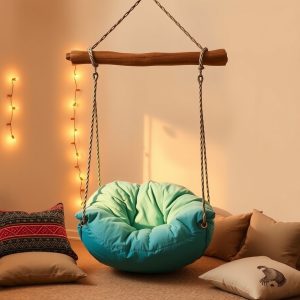
Thoughtful Treasures: Gift Ideas That Speak to an Autistic Teen’s Unique World

Finding the perfect gift for an autistic teenager means celebrating their individuality while honoring their sensory preferences, passions, and comfort zones.
The best presents don’t just entertain—they empower, soothe, and connect with their distinct way of experiencing the world.
For teens who crave tactile stimulation, consider a high-quality fidget toy collection with textured putty, mesh-and-marble squeezers, or silent clickable gadgets.
Weighted blankets or a cozy hoodie with compression lining offer deep-pressure comfort during overwhelming moments.
Those with auditory sensitivities might adore noise-canceling headphones in their favorite color or a playlist of calming nature sounds curated just for them.
Gifts that align with special interests spark joy like nothing else. A budding astronomer would light up at a glow-in-the-dark star projector, while a train enthusiast might treasure a vintage locomotive model kit.
For artistic teens, a set of smell-free markers or a digital drawing tablet lets creativity flow without sensory hurdles.
Practical gifts can make daily life smoother too. A visual timer helps with transitions, while a personalized “break box” filled with stress-relief tools offers a safe retreat.
For social connection, try a card game based on their favorite topic or a journal with prompts tailored to their communication style.
The magic lies in observing what makes them thrive. Whether it’s a sensory sanctuary, a passion-fueled project, or a tool for independence, the right gift tells them: “I see you, and you’re amazing exactly as you are.
Life-Changing Gift Ideas for Autistic Teenagers
Finding meaningful gifts for autistic teens means recognizing their comfort zones, sensory needs, and unique interests.
Below, each idea is detailed in the style of a guided gift basket—why it helps, what to include, real examples, extra tips, and how to make each gift special.
1. Weighted Blanket Basket

A time-tested comfort for anxious days and restless nights. A weighted blanket feels like a gentle hug, calming both mind and body. Teens can wind down, read, or nap with deep relaxation.
Even, gentle pressure from a weighted blanket has been shown to soothe nerves, lower anxiety, and improve sleep. Many autistic teens rely on this to settle into routines and manage stress.
-
Weighted blanket (10–15 lbs. or based on body weight)
-
Removable soft cotton or fleece cover
-
Care instructions card
-
Lavender sachet to tuck in the blanket bag
After struggling with sleep, Sam received a weighted blanket for his 16th birthday. Now he settles to sleep faster, and his family reports better mornings for everyone.
Choose a favorite color or calming pattern. Include a matching pillow or soft throw.
Remove and wash the cover regularly; air out the blanket. Choose fabrics that breathe naturally.
Roll the blanket and tie with a wide ribbon. Slip the sachet and instruction card in a side pocket.
2. Noise-Cancelling Headphones Set
A portable shield from the chaos of daily noise. Noise-canceling headphones create calm anywhere—on the bus, in the classroom, or at the mall.
Teens with sound sensitivities use headphones to block overwhelming sounds, improving focus and comfort in unpredictable environments.
-
Quality noise-canceling headphones (over-ear or on-ear)
-
Drawstring carry pouch
-
Fun sticker pack to personalize
-
Laminated “My Quiet Time” note to hang as needed
Emma uses her headphones every school day. She chooses music to focus, then sets them to silent mode in loud hallways. Her grades and confidence improved.
Let the teen select the headphone color or add their favorite playlist.
Wipe ear pads regularly; store in the pouch when not in use.
Tuck headphones in the pouch, add stickers and a note in an outer gift bag.
3. Fidget Toy and Chewelry Kit

A collection built for nervous hands and moments of stress. Fidgets distract anxiety, while chewable necklaces provide safe oral sensory relief.
Hand and mouth busywork helps many autistic teens manage social stress, focus during tasks, and avoid unwanted habits like nail biting.
-
Fidget spinner, tangle toy, or stress ball
-
Silicone chew necklace or bracelet
-
Small pouch or tin for portability
-
Choice card describing when to use (e.g. “Need to calm down?”)
Mark’s teacher noticed improved participation after Mark could choose a fidget tool during class. He relaxes and learns better with something to hold or chew.
Match toy colors to the teen’s favorite hues. Rotate new fidgets for variety.
Sanitize fidgets and chewelry regularly. Check for wear.
Pack fidgets in a clear container, tie with a bright ribbon.
4. Soft, Tagless Clothing Set
Comfort comes first. A kit of tag-free, soft cotton shirts and seamless socks helps teens focus on daily routines, not scratchy seams.
Sensory-friendly clothes eliminate the daily battle with tags, seams, or itchy fabric. They boost independence and comfort all day.
-
Tagless T-shirts or long sleeves
-
Seamless socks or boxer briefs
-
Cozy hoodie (no drawstrings)
-
Fabric softener sample and care tips
Isabella dreaded getting dressed until she tried seamless, soft clothes. Now she chooses her own outfits without stress.
Let the teen help pick colors and cut. Offer both long and short sleeves.
Wash with unscented detergent. Avoid fabric softeners with heavy fragrance unless requested.
Fold clothes neatly in a laundry basket or cloth tote, tie with a soft ribbon.
5. Sensory Swing or Bean Bag Retreat

A private corner for calm. A sensory swing or fluffy bean bag gives a teen their own go-to spot for unwinding and feeling safe.
Deep pressure and enveloping comfort help regulate emotions. Gentle rocking or sinking in a bean bag eases transitions and recharges energy.
-
Hammock swing or sturdy pod swing for indoor mounting
-
Oversized bean bag chair (memory foam fill)
-
Soft throw blanket
-
“Chill Out Zone” sign
Leo’s family set up a reading nook with a pod swing and bean bag. After stressful days, Leo spends time there listening to music or just being quiet.
Add favorite books or puzzles beside the chair.
Keep seating clean and inspect supports if wall-mounted.
Drape a cozy blanket over the bean bag, attach the sign with a safety pin.
6. Sensory Lamp Or Night Light Box
A soothing visual experience for down time. Soft lamps, bubble tubes, or projectors dim the noise of the day and set the scene for quiet relaxation.
Gentle light and slow movement calm the mind, especially before bed.
-
Jellyfish lamp, bubble lamp, or soft mood projector
-
Extra colored bulbs or light discs (if changeable)
-
Sleep mask and wind-down card (“Switch off and relax”)
Omar’s bubble lamp became a nightly ritual. He watches the bubbles, and his parents say bedtime battles disappeared.
Choose lamps with timers or auto-off for safety.
Clean lamp surfaces and change water according to instructions.
Place the lamp in its box, wrap with tissue, and tuck the sleep mask inside.
7. Brain Game, Puzzle or Building kit

Tabletop fun that builds focus and pride. Puzzles, building blocks, and logic games suit solo play, family time, or friendly competition without social pressure.
Structured, creative play boosts problem-solving and brings rewarding results—piece by piece.
-
Jigsaw puzzle (500+ pieces) with a favorite theme
-
Sudoku, Rubik’s Cube, or logic game
-
Simple LEGO or model kit
-
Completion certificate or congratulatory card
Jasper spent rainy days mastering a tricky model ship. Each new step kept him focused and proud. He displayed the finished model in his room.
Choose themes aligning with the teen’s hobbies or interests.
Organize pieces in resealable bags or trays for less mess.
Pack kits in a clear shoebox or decorative tin.
8. Tactile Kit: Mats, Putty and Sensory Play
A set for hands-on calm. Tactile mats, squishy putty, and sand offer quiet, safe ways to self-soothe.
Varied textures help manage stress—press, squeeze, or swirl to reset in busy moments.
-
Textured or squishy mats
-
Putty or kinetic sand in sealable tubs
-
Calm-down prompt cards
-
Cleaning wipes
Liam prefers squishing putty between classes. He stores it in his backpack for easy access.
Choose unscented varieties for scent-sensitive teens.
Replace sticky putty regularly. Wipe mats clean.
Layer items in a mesh pouch or plastic caddy with a playful label.
9. Special Interest or Hobby Box

A celebration of the teen’s passion—space, animals, trains, fantasy worlds, art, coding, or music. Show you care by curating a box for their favorite topic.
Deep dives into special interests build skills, confidence, and real joy.
-
Books, magazines, or posters on their passion
-
Model kit, art supplies, or DIY set
-
Themed puzzle or apparel
-
Handwritten note sharing excitement about their interest
Avery’s obsession with weather turned into a climate science kit, complete with storm tracking charts and books on tornadoes. He spent days absorbed in projects.
Ask about their top interest before buying.
Make sure materials are age-appropriate and safe.
Use a themed backpack or sturdy box with custom stickers.
10. Social Game and Flexible Routine Set
Interactive but gentle fun for building social skills and flexibility. Simple board or card games encourage teamwork, sharing, and respite from screens.
Games with clear rules and short turns support learning social cues without pressure.
-
Cooperative or turn-taking family game (Uno, Connect 4, Guess Who?)
-
Visual schedule cards for game night
-
Timer for turn taking
-
Snack-sized treat for winners and all players
Theo’s family introduced weekly board game night. He picked a new game each time, learned to wait his turn, and looked forward to bonding every weekend.
Choose games with visual instructions or minimal reading.
Wipe cards and pieces after group play.
Pack the game in a gift bag with snacks and schedule cards on top.
Frequently Asked Questions (FAQs)
What is the best weight for a weighted blanket for an autistic teenager?
The typical guideline is to choose a blanket about 10% of the teen’s body weight. For most teenagers, this means a weighted blanket between 10 and 15 pounds.
Always consider the teen’s comfort and consult a healthcare professional if unsure.
Can a weighted blanket be used during the day?
Yes. Many teens find weighted blankets helpful during quiet time, homework, or moments of anxiety, not just at night. A smaller lap pad option works well for daytime use.
Are weighted blankets safe for autistic teens?
Weighted blankets are generally safe for most autistic teens, but supervision is important, especially when introducing a weighted blanket for the first time.
Avoid use if the teen has respiratory or circulation problems. Consult with a healthcare provider if needed.
How often should I wash the weighted blanket?
Wash the removable cover regularly according to label instructions, usually once every one to two weeks.
The blanket itself can be washed less frequently, but follow specific manufacturer guidelines.
Can a weighted blanket help with anxiety and sleep problems?
Yes. Many autistic teens experience anxiety and trouble sleeping. Weighted blankets use deep pressure stimulation to promote calmness and improve sleep quality.
Conclusion
A weighted blanket basket offers more than warmth—it provides calm, comfort, and a sense of security. For autistic teenagers, these benefits can translate into better sleep, reduced anxiety, and improved daily routines.
Thoughtfully assembled with soft fabrics, care instructions, and calming extras, this gift shows understanding and kindness.
Choosing a weighted blanket basket means giving a gift that truly helps, supporting self-regulation in a gentle, soothing way. It is a thoughtful present that brings peace, one cozy moment at a time.
These gifts don’t just fill a box—they make a daily difference in real lives. Pick what suits best, pack with care, and show the autistic teenager in your life you really understand and support them.
